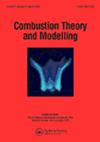Kinetics of catalytic oxidation of oxygenated fuels on Pt/ZSM-5 catalyst
IF 1.6
4区 工程技术
Q4 ENERGY & FUELS
引用次数: 1
Abstract
To build a set of complete kinetic parameters of oxygenated fuels kinetic model on Pt catalyst, methanol was used as an example to carry out the catalytic oxidation kinetics experiment of oxygenated fuels on Pt/ZSM-5 catalyst. The Power law model and Langmuir–Hinshelwood (L–H) model were established to characterise the catalytic oxidation reaction of methanol. Then the oxidation kinetics of methanol, ethanol, dimethyl ether (DME) and n-butanol on Pt/ZSM-5 was studied under the same experimental conditions. It was found that the reaction orders of fuel molecules (methanol is −0.14) were much less than that of oxygen (1.23) in Power law model. The adsorption constants of fuel molecules were higher than that of oxygen in L–H model. The adsorption characteristics of alcohols on Pt were similar, but the reaction orders of alcohols were not consistent. The adsorption constants and adsorption heat of dimethyl ether were much larger than that of alcohols. The intrinsic reaction rates of four oxygenated fuels on Pt/ZSM-5 were compared at the same input power: r methanol r DME r ethanol r n-butanol. In general, methanol is a suitable oxygenated fuel in the design and development of catalytic micro-combustor.含氧燃料在Pt/ZSM-5催化剂上的催化氧化动力学
为了建立一套完整的含氧燃料在Pt催化剂上的动力学模型,以甲醇为例,在Pt/ZSM-5催化剂上进行了含氧燃料的催化氧化动力学实验。建立了幂律模型和Langmuir–Hinshelwood(L–H)模型来表征甲醇的催化氧化反应。在相同的实验条件下,研究了甲醇、乙醇、二甲醚和正丁醇在Pt/ZSM-5催化剂上的氧化动力学。在幂律模型中发现,燃料分子(甲醇为-0.14)的反应级数远小于氧分子(1.23)。在L–H模型中,燃料分子的吸附常数高于氧气的吸附常数。醇在Pt上的吸附特性相似,但醇的反应顺序不一致。二甲醚的吸附常数和吸附热远大于醇类。在相同的输入功率下,比较了四种含氧燃料在Pt/ZSM-5上的本征反应速率:r甲醇r二甲醚r乙醇r正丁醇。在微型催化燃烧器的设计和开发中,甲醇通常是一种合适的含氧燃料。
本文章由计算机程序翻译,如有差异,请以英文原文为准。
求助全文
约1分钟内获得全文
求助全文
来源期刊

Combustion Theory and Modelling
工程技术-工程:化工
CiteScore
3.00
自引率
7.70%
发文量
38
审稿时长
6 months
期刊介绍:
Combustion Theory and Modelling is a leading international journal devoted to the application of mathematical modelling, numerical simulation and experimental techniques to the study of combustion. Articles can cover a wide range of topics, such as: premixed laminar flames, laminar diffusion flames, turbulent combustion, fires, chemical kinetics, pollutant formation, microgravity, materials synthesis, chemical vapour deposition, catalysis, droplet and spray combustion, detonation dynamics, thermal explosions, ignition, energetic materials and propellants, burners and engine combustion. A diverse spectrum of mathematical methods may also be used, including large scale numerical simulation, hybrid computational schemes, front tracking, adaptive mesh refinement, optimized parallel computation, asymptotic methods and singular perturbation techniques, bifurcation theory, optimization methods, dynamical systems theory, cellular automata and discrete methods and probabilistic and statistical methods. Experimental studies that employ intrusive or nonintrusive diagnostics and are published in the Journal should be closely related to theoretical issues, by highlighting fundamental theoretical questions or by providing a sound basis for comparison with theory.
 求助内容:
求助内容: 应助结果提醒方式:
应助结果提醒方式:


